ASU LightWorks® projects, leaders and associates continuously publish thought leadership articles, papers and brochures.

Publications
LightWorks

Using Light to Solve Societal Problems
Since its inception, LightWorks has provided solutions to the world’s most pressing global energy challenges through a simple idea: energy from sunlight. We discover and invent energy solutions to the world’s fuel, electric and social challenges. ASU LightWorks envisions a resilient and equitable energy future supported by innovations in technology, policy, law, and markets. We pursue breakthroughs not just to power the world, but to empower it; to enrich people’s lives everywhere; to enlighten communities across the globe; to achieve energy security; to secure energy justice, and to inspire future generations.
Solar electric
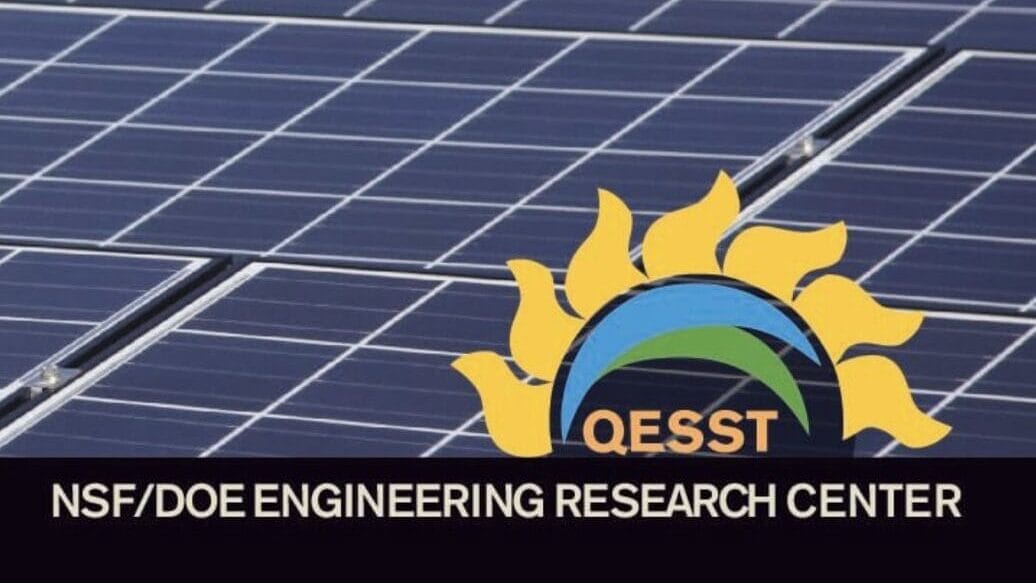
Quantum Energy and Sustainable Solar Technologies Engineering Research Center overview brochure
QESST is an Engineering Research Center sponsored by the National Science Foundation (NSF) and U.S. Department of Energy (DOE) that is focused on advancing photovoltaic science, technology and education in order to address one of society’s greatest challenges: transforming electricity generation to sustainably meet the growing demand for energy.
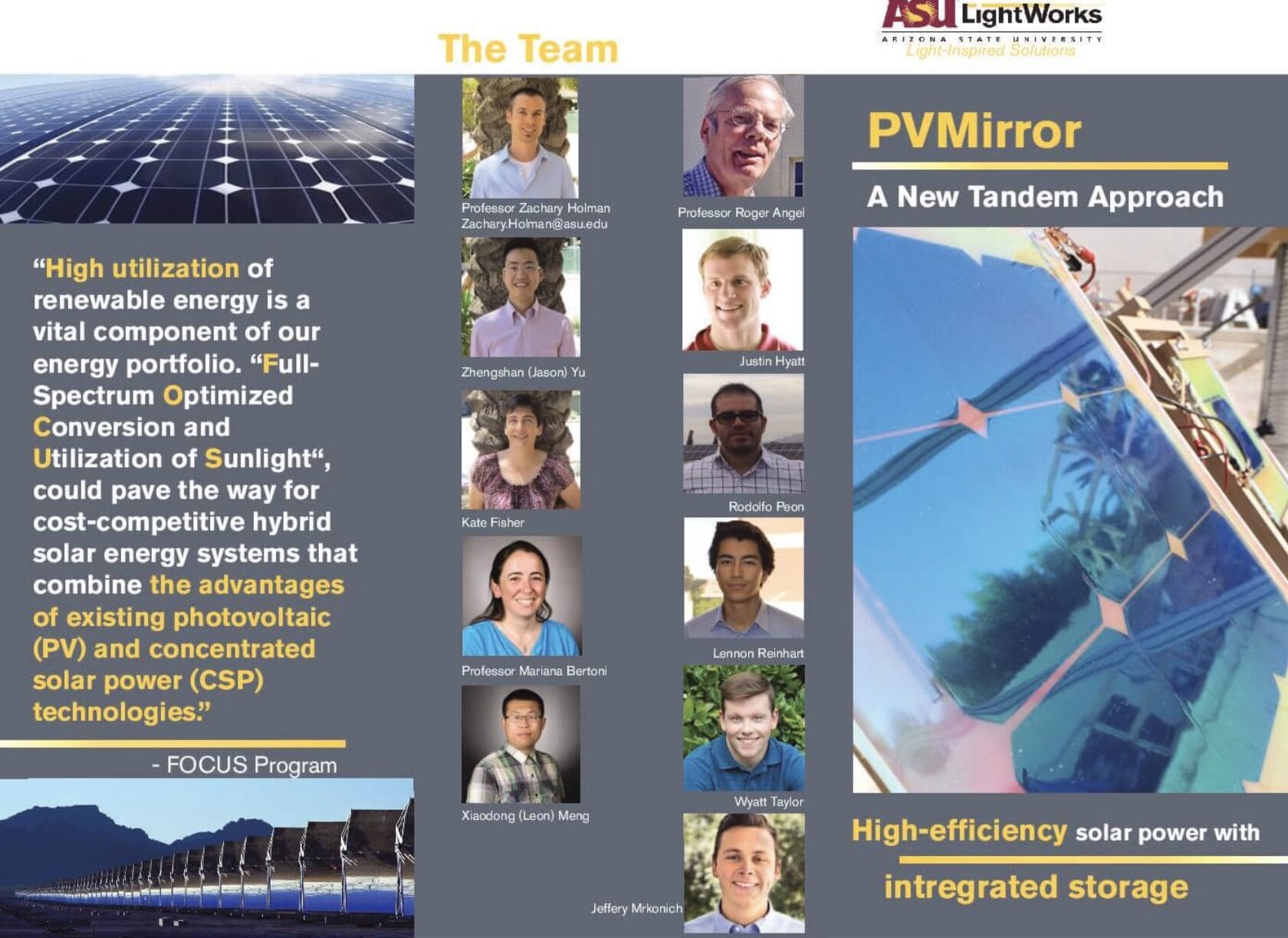
PV Mirror: A New Tandem Approach
PV Mirror is a hybrid solar power plant technology combining the high efficiency of photovoltaics with the energy storage benefits of concentrating solar thermal power. The PV Mirror Project is collaborative effort between the Holman Research Group and the Defect Lab at ASU and the Mirror Lab at the UA.
Energy and society

Utility of the Future Center overview brochure
States across the nation continue to adopt policies aimed at de-centralizing and decarbonizing their energy systems through Renewable Portfolio Standards and Energy Efficiency Resource Standards, as well as a multitude of other policies. Electric utilities are not only the implementers in chief of these policies, but they also face transformational change if these policies succeed in allowing consumers to produce their own energy, thereby bypassing the utilities entirely.
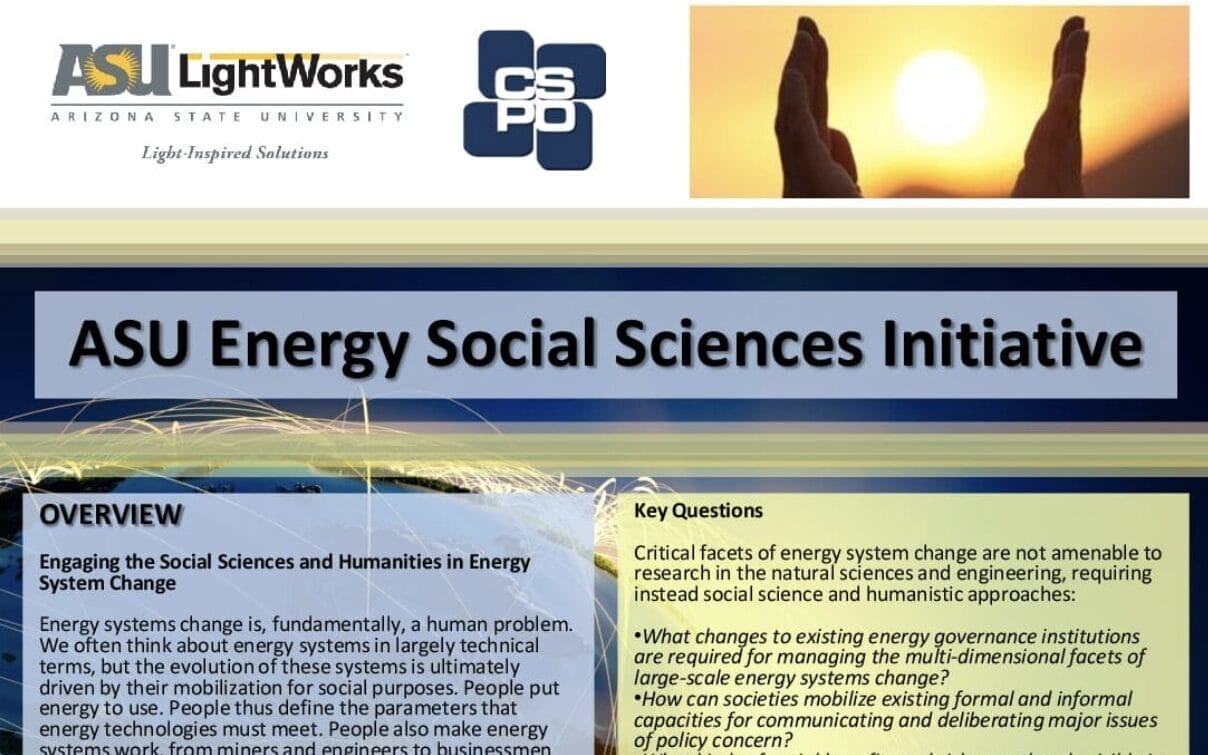
Social sciences and humanities in energy overview flyer
Energy systems change is, fundamentally, a human problem.We often think about energy systems in largely technical terms, but the evolution of these systems is ultimately driven by their mobilization for social purposes. People put energy to use. People thus define the parameters that energy technologies must meet.
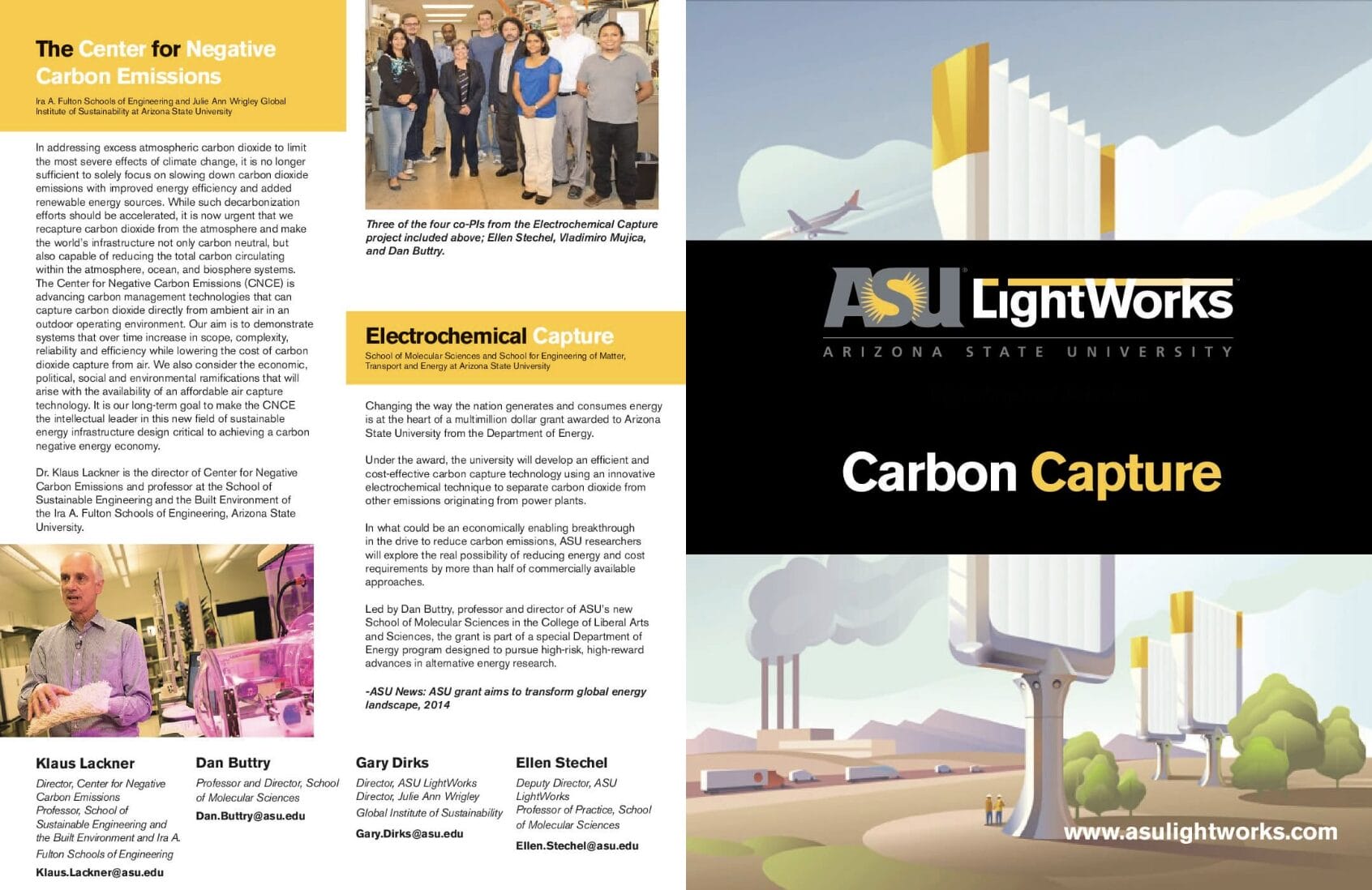
Carbon Capture
In addressing excess atmospheric carbon dioxide to limit the most severe effects of climate change, it is no longer sufficient to solely focus on slowing down carbon dioxide emissions with improved energy efficiency and added renewable energy sources. While such decarbonization efforts should be accelerated, it is now urgent that we recapture carbon dioxide from the atmosphere and make the world’s infrastructure not only carbon neutral, but also capable of reducing the total carbon circulating within the atmosphere, ocean, and biosphere systems.

Carbon Capture and Storage
A team of researchers led by Arizona State University are developing a reliable and energy efficient carbon dioxide capture system to mitigate waste carbon dioxide emissions. This innovative device uses less energy than commercial carbon capture systems and easily retrofits at existing facilities by employing an electrochemical cell to capture CO2 at the cathode, transport it across the cell and release it at the anode.

High Temperature InGaN Thermionic Topping Cells
A team consisting of Arizona State University, Georgia Institute of Technology, PhotoNitride Devices and SunVapor are working together to create a two-junction tandem InGaN solar cell which can operate under high temperatures and solar concentration in parallel with a solar thermal system. InGaN was chosen because of its tunable bandgap and its robustness at elevated temperatures. This “topping cell” will incorporate with a solar-thermal system, resulting in higher overall system efficiency at lower overall cost per watt.
Sustainable fuels and products
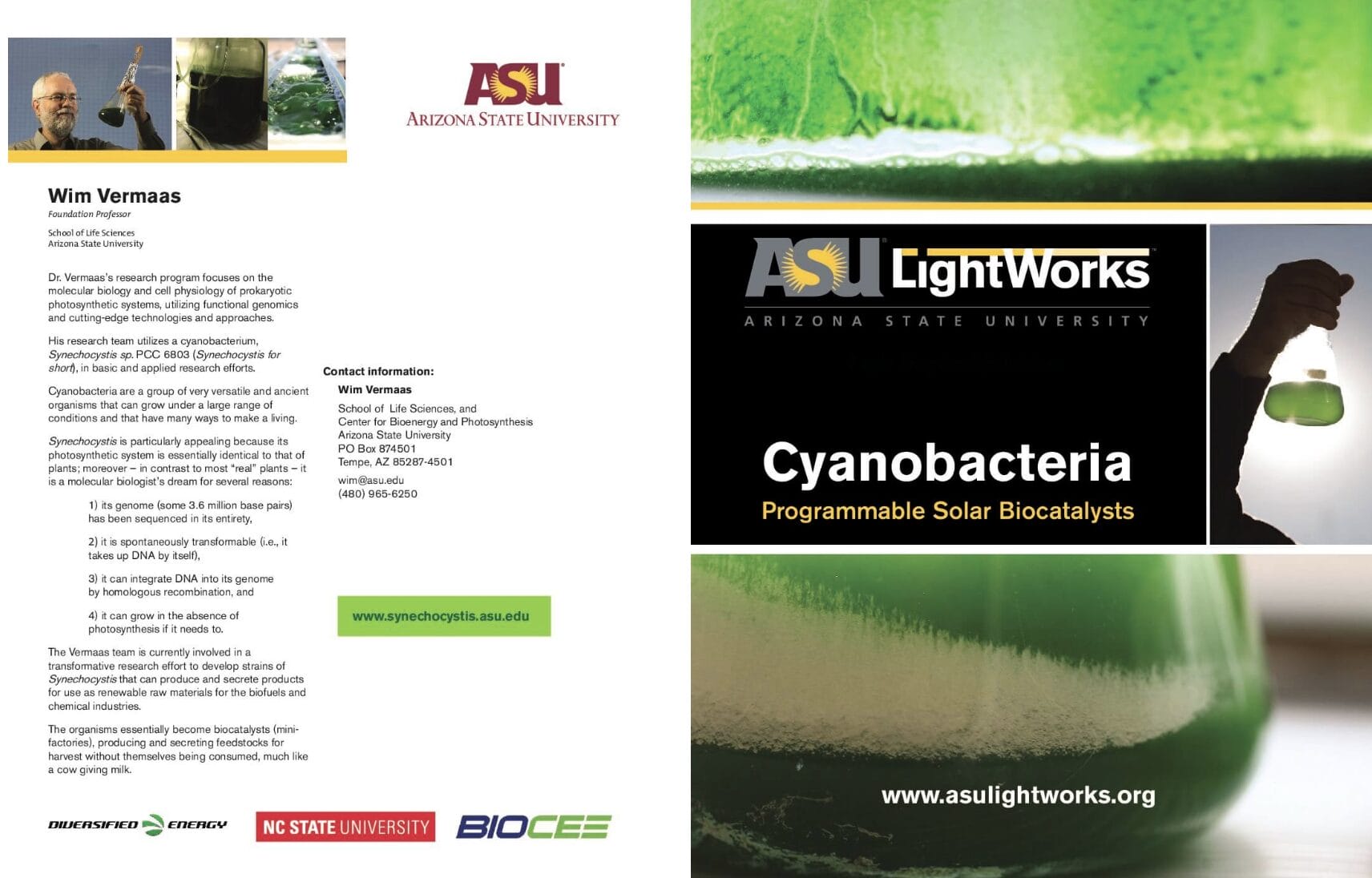
Cyanobacteria – Programmable Solar Biocatalyst
Dr. Vermaas’s research program focuses on the molecular biology and cell physiology of prokaryotic photosynthetic systems, utilizing functional genomics and cutting-edge technologies and approaches. His research team utilizes a cyanobacterium, Synechocystis sp. PCC 6803 (Synechocystis for short), in basic and applied research efforts.
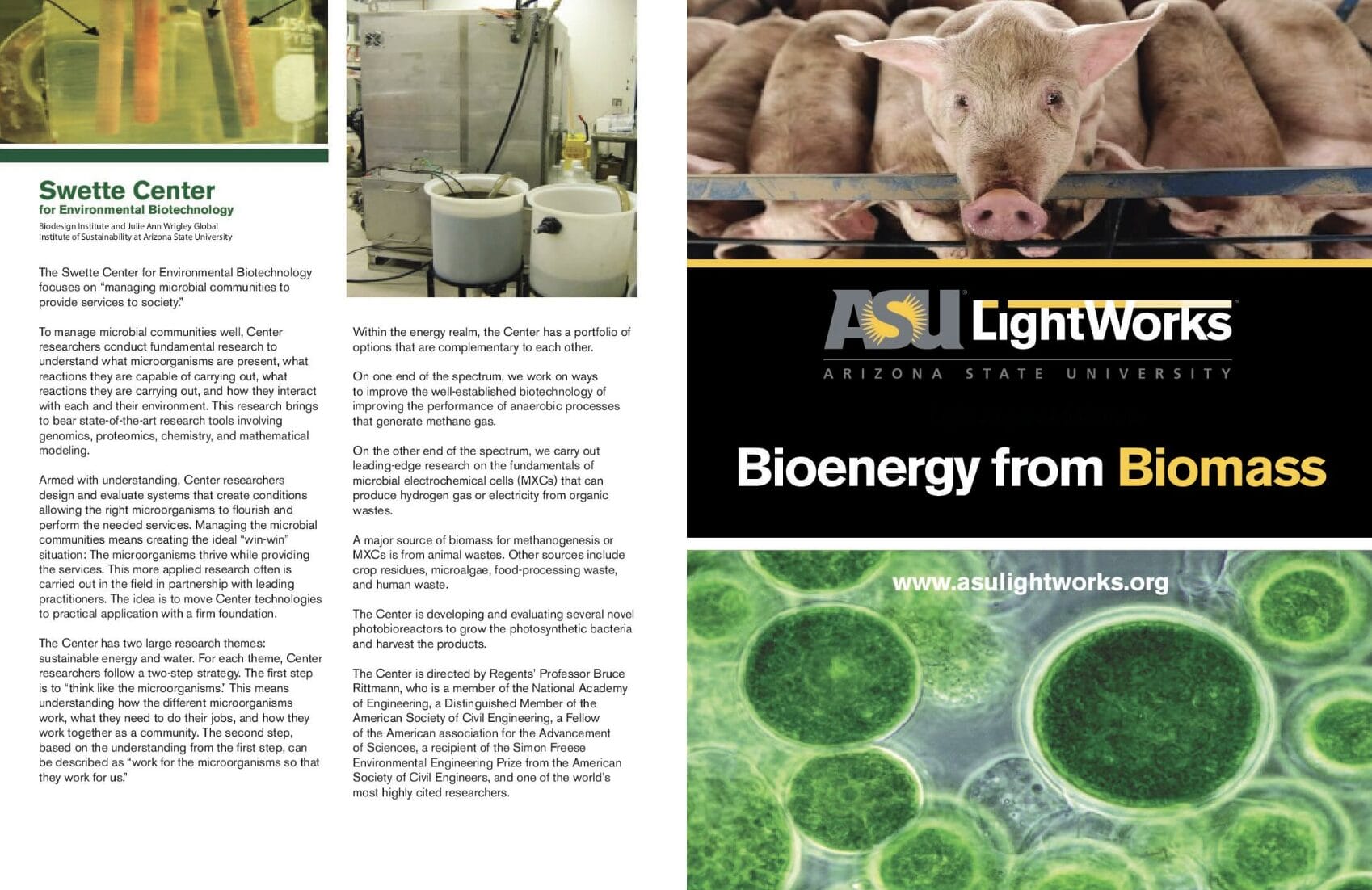
Bioenergy from Biomass
The Swette Center for Environmental Biotechnology focuses on “managing microbial communities to provide services to society.” To manage microbial communities well, Center researchers conduct fundamental research to understand what microorganisms are present, what reactions they are capable of carrying out, what reactions they are carrying out, and how they interact with each and their environment. This research brings to bear state-of-the-art research tools involving genomics, proteomics, chemistry, and mathematical modeling.
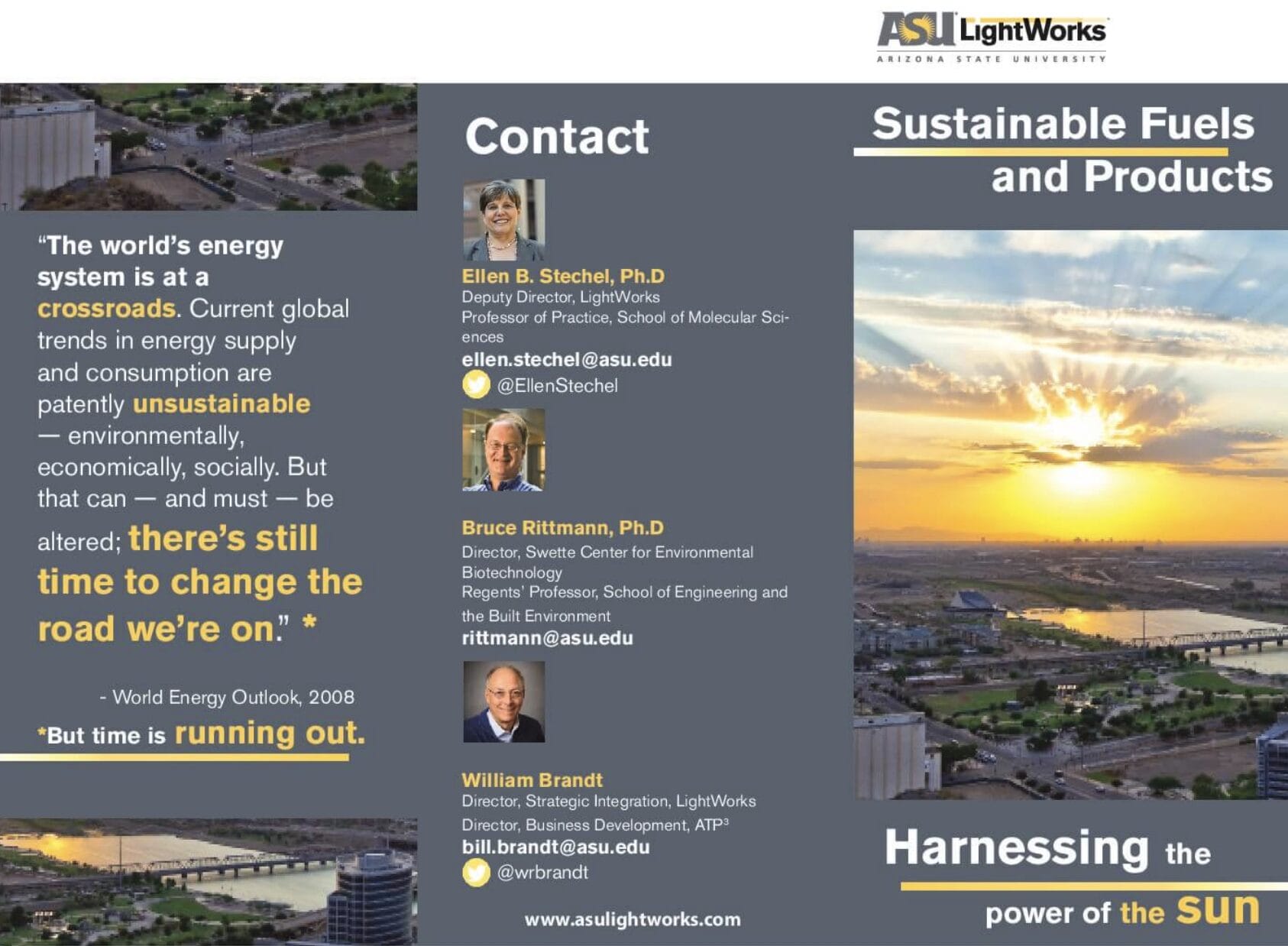
Sustainable Fuels and Products
Sustainable Fuels and Products is a coordinated, interdisciplinary network of researchers within LightWorks that addresses high impact opportunities to enable and advance the production of sustainable fuels and products to meet society’s grand sustainability challenges. LightWorks coordinates and develops strategic collaborations between our researchers and new potential partners.